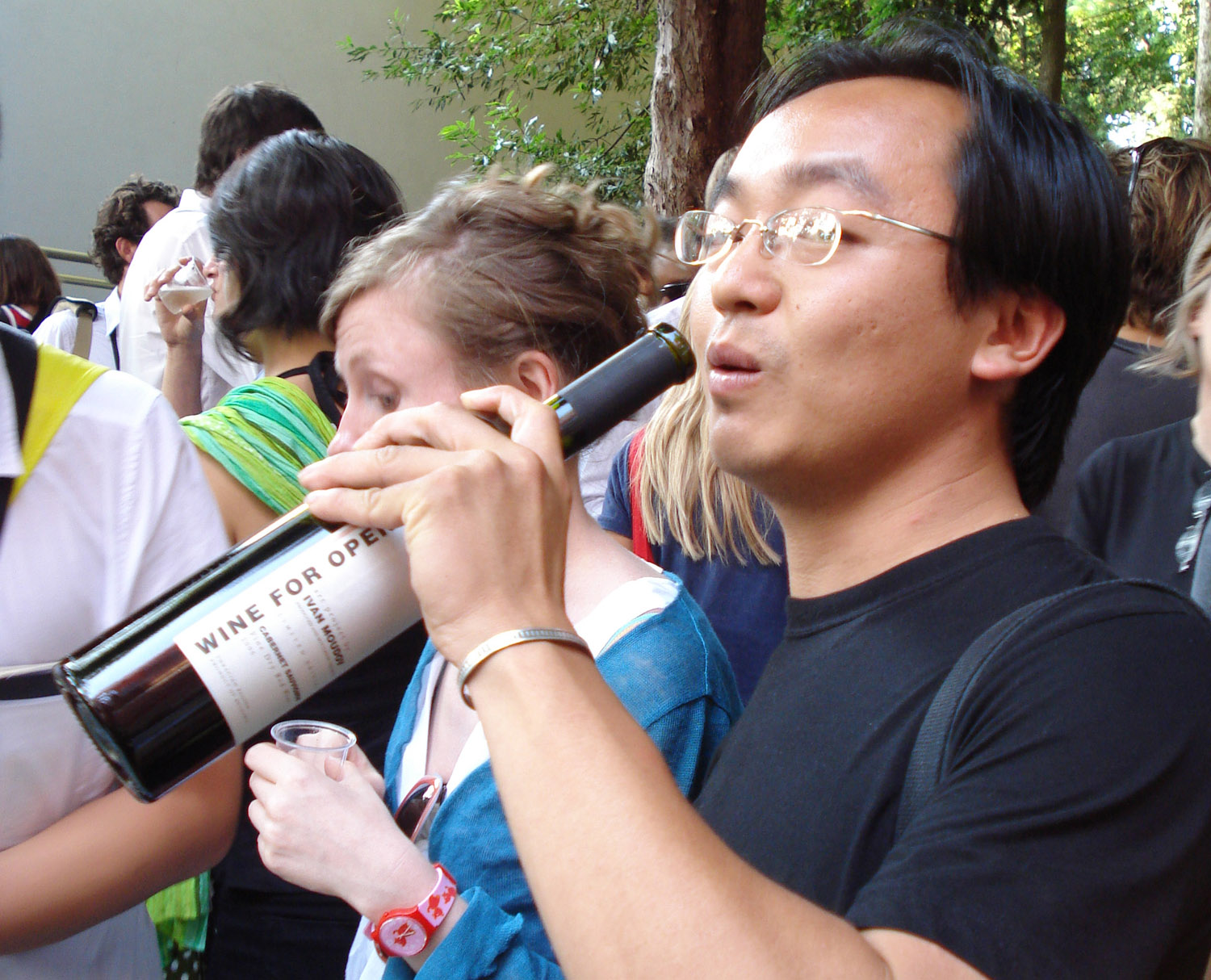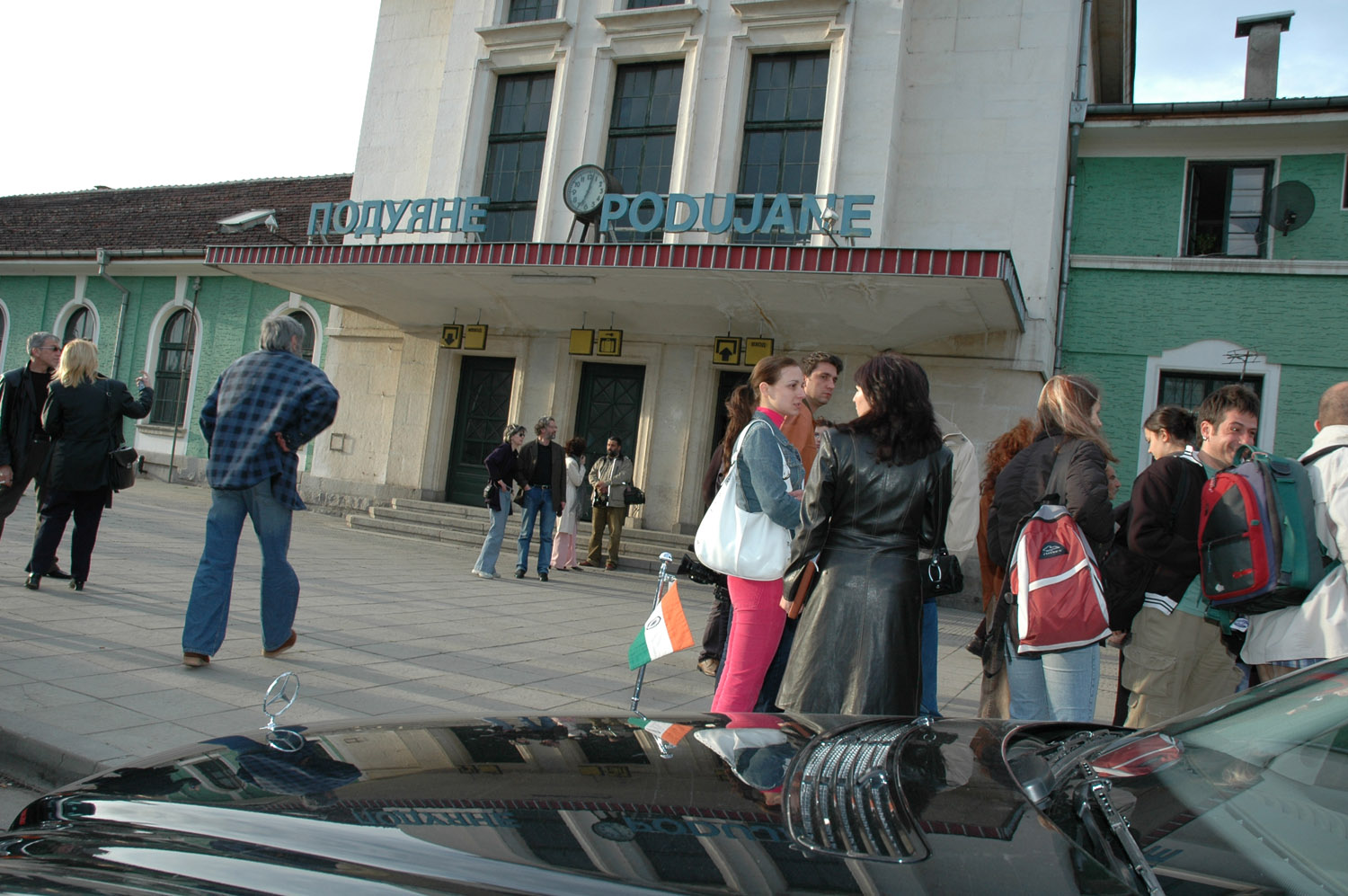The Art of “Provocation” or How to Overturn Common Sense
“Performing Time” is the second exhibition by Ivan Moudov (1975) at Prometeogallery di Ida Pisani.
Starting out from the idea that art involves and invades social and cultural spaces, Moudov – one of the most interesting Bulgarian artists of his generation – uses a variety of media to create works that often feature low-tech, provocative actions and images. In his creations, reality is often portrayed differently for he turns to everyday situations, illustrating and narrating them in an ironic language that, over the years, has become one of the salient features of his work.
Like Rorty’s ironic intellectual, Ivan Moudov offers a vocabulary of his own, which is intended as a new model for a different idea of the world: one that is not subject to reality, but that creates it.
Fresh Window (2012), for example, is a work that refers back to Marcel Duchamp’s Fresh Widow (copyright Rose Sélavy, 1920). In the case of the latter, the artist required the leather panels of a green French window to be polished every day. This may be why the French Window became a Fresh Widow for Duchamp. Inspired by Duchamp’s work, Moudov continues the play on words in his Fresh Window, a window that will be painted every day by the gallery staff, thus requiring their active participation, for the entire duration of the Milan exhibition. A perfect replica of Duchamp’s work, though different in size (1.9 x 2 metres), the work must constantly remain “fresh”. This is a reference to the infra-mince, the experience at the limits which is found in the “co-intelligence of opposites”, which Duchamp himself refers to as the “surface infinitésimale relevant de deux mondes à la fois”. Moudov takes up the Duchampian tradition and returns to the “retinal” nature of the work of art, in which pleasure does not depend solely on the sensitivity of the retina but on the fact that our entire ability to comprehend is brought into play.
Adopting an ironic approach (in the Rorty sense of the word) and offering a new way of “looking”, Moudov compiles a decisive new vocabulary with which to re-describe himself and create an external reality. This is not in spite of, but rather due to the contingency of his own creations and, subsequently, of his own Self.
It is indeed the artist’s ironic stance that underlies the entire exhibition. Even the main door of the gallery becomes a work in Door (Prometeogallery di Ida Pisani, 2012). Once one has entered the gallery, the only way to get out is by asking for help from passersby in the street. A notice reassures the visitors: “Dear visitor, if you read this text, the door of this gallery has already closed and there is no way to open it and exit the room. The door opens just from the outside. Please do not panic. Most likely very soon someone will come to open the door and let you out. The exhibition organizers assured us that they expect large attendance”. By locking them in the gallery until the door is opened with someone’s help, the artist turns the relational aesthetics of Bourriaud (1995) into practice. This theory maintains that the gallery space loses its original function and significance as a place for the consumption of art and becomes a space-time of social interaction.
Performing Time (2012), the work that gives the exhibition its title, is an authentic example of “embodiment”, in which it is the artist’s body that materialises time. In a video lasting 24 hours, the artist moves the hands of a clock, thus performing his own concept of time and giving a corporal presence to it. Moudov performs a trivial task, making time move faster or slower. Following his own personal inclinations and with no concern for Greenwich time, he performs an artificial construction of time in real space.
Unlike La sortie de l’usine Lumière de Lyon (1895), by the Lumière brothers (in which a “real time” sequence shot of the end of a day’s work made the passing of time explicit) and unlike 24 Hours Psycho (1993) by Douglas Gordon (in which the sequences are projected without audio onto two screens, one at normal speed and the other in reverse and in slow motion, so that each still lasts a second and the entire film 24 hours), Moudov’s time is not represented but rather created by the artist himself, as the result of his own experience. Quite literally, it is his time. A time that cannot be followed entirely within the gallery. Once again this is an ironic view that creates its own reality by upsetting the common sense of time. It also brings into play a reflection on the work of art and on the time constraints exerted on such a work in an exhibition space.
In Dan, Dan (2010), five plastic bags containing dust scratched from Dan Perjovschi’s wall drawings at the Institute of Contemporary Art in Sofia provide evidence of the artist’s action. In this case, his irony is directed towards the very status and value of works of art: is what derives from a work of art a work of art itself? And when is it that an artistic derivative acquires value?
These are the questions behind Already Made 4 (Timm Ulrichs) (2007), a work in which Moudov takes inspiration from Timm Ulrichs, the German artist known for his Stolen Objects (1969-1972) and who in 1971 recorded his own attempt to steal a colleague’s drawing from a gallery. Here Moudov copies the process, choosing to steal Ulrichs’ work and then to photograph it repeatedly until he has taken full possession of the process. Creating a mise-en-abîme effect, Moudov shows a photo of a photo of a photo, in which Ulrichs becomes quite unrecognisable.
The theme of appropriation is nothing new in the world of art for many artists learned by imitating, borrowing forms and styles from the past. Picasso maintained that “a good artist copies, a great artist steals” and Marcel Duchamp is unanimously hailed as the inventor of the “ready-made”. Also in more recent times, as we see in the works of Sherrie Levine, Barbara Krueger and Richard Prince, the theme of appropriation is key and often appears as a criticism of the fine arts, viewed as an institutional and political system. In his stunning Untitled (Cowboy), the celebrated photo of 1989, Richard Prince (who photographed a picture made by Sam Abell for a Marlboro Man advertising campaign in the 1980s) sums up the meaning of appropriation in contemporary art, but in Moudov’s world appropriation becomes a performative gesture, consisting in choosing a particular object and then rearranging it and giving it a new context. It is no longer the object that is artistic, but rather the artist’s choice, identity and signature that turns the object into a work of art.
The exhibition also includes two works on the borderline between design and ironic provocation. In Right Hand, Middle Finger (2012), the fingerprint of the middle finger of a right hand is elegantly impressed on an metal plate, almost as though creating a lace pattern. In Glory Hole (2012), a hole in a way decorates an incredibly smooth surface, becoming a sculptural work. Through its title and the height at which it is made, is also brings with it overtones from the world of pornography (where a partition wall with a hole makes it possible to carry out certain sexual activities while remaining completely anonymous). The 2000 Syndrome (1998) video is an ironic allusion to the ability of human beings to entertain the most absurd expectations. Made at a time when the world was expecting a hypothetical catastrophe (the arrival of the year 2000), in the video we see the artist facing a door and waiting for it to fall. And the fall does indeed come, just when a counter in the right-hand corner of the screen shows the figure 2000.
Further confirmation of Moudov’s provocative art can also be seen in other two recent works: Stones (2012 currently being created) and 0GMS Cabinet 1 (2011, which contains works by Peter Fritzenwallner, Esther Kempf, Stela Vassileva and Taiyo Kimura). In the case of 0GMS, the artist creates a commercial gallery with the dimensions and format of a drawer unit. 0GMS exhibitions mainly present the works of young artists, works that must fit the size the drawers, and the “gallery” becomes an ironic détournement of what would normally be a commercial exhibition space. This is in part a provocative challenge to a system (the art world) which has reached the point where it is almost completely identified with the market and increasingly standardised in terms of its communication styles and the tastes of its public.
In Stones, a space filled with little stones becomes a compulsory pathway through the gallery. By getting into the visitors’ shoes, the pebbles upset not only the entire time one is looking at the exhibition, but also when one steps outside and starts walking.
Like irony itself, Moudov’s art creeps in, interferes, persists, and makes us ponder.
 text
text

